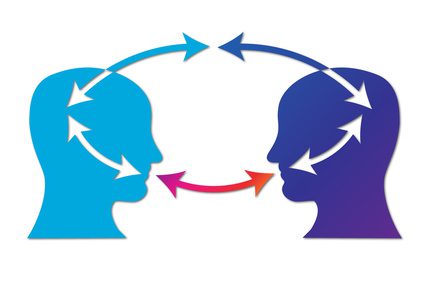 A while ago I posted on influencing without authority, that post looked at building credibility and ‘currency’ to trade for the support and help you need. Those ideas buy you a seat at the table but how much influence you exert in any given situation largely depends on how effective you are at being influential. This post looks at some of the subtle ways you can influence situations to help everyone move to a satisfactory outcome[1].
A while ago I posted on influencing without authority, that post looked at building credibility and ‘currency’ to trade for the support and help you need. Those ideas buy you a seat at the table but how much influence you exert in any given situation largely depends on how effective you are at being influential. This post looks at some of the subtle ways you can influence situations to help everyone move to a satisfactory outcome[1].
Smart influencers recognise it is often futile to work against powerful resistance, rather than fighting the situation (and making the situation worse) they slow down and look for ways to influence the eventual outcomes. They change and combine the situation, their language and their actions to achieve an outcome. The timing, and the way you use these skills defines how influential you are in any situation.
Being in the right situation at the right time helps enormously some of the key factors include:
- Being open and aware. In stressful situations, effective influences slow down, take a breath and observe what is occurring before taking action. Focused breathing is an important and often neglected way to create awareness. As we take the time to focus on our breathing we relax, which increases our perception, creates options for viewing the situation from a new perspective and heightens empathy. This in turn enhances our ability to influence and lead.
- Use physical movement as a trigger for a change in attitude. Dealing with a tough colleague, who has assumed a hostile, close position and is unwilling to open up to you may benefit from inducing a physical change to trigger a change in attitude. Suggest ‘we go downstairs for a coffee’ – if you are moving together for one thing, it may open up other ways of ‘moving together’. A more subtle way to change a closed attitude, particularly if it is manifest in a ‘closed position’ with arms crossed, etc., is by offer the resisting colleague an object such as a pen or a document. This can result in them moving to open their folded hands, or shift forward in their chair. The change in outward behaviour can often cause changes the inner attitudes, just as surface behaviours generally are a reflection of inner feelings.
- Use the space around you to influence attitudes both in formal meetings and in your own office space; creating the right ambience will help you influence others. Some of the things to consider include:
- A meeting table is virtually divided into personal zones. These zones are maintained zealously. Make sure you don’t inadvertently cross the lines.
- Move away from negotiation stalemates and conflict situations by reorganising the physical setting. If the meeting has stalled try moving to a low circular table in the lobby or sitting in a corner; the less formal situation can often break down barriers and yield better results.
- Be aware of personal space and seating hierarchies. Rather than confronting the ‘opposition’ across a rectangular meeting table consider setting up a ‘round table’ where ‘we’ can work together on the issue.
Once you have the situation optimised for influence, what you do and how you do it creates your ability to be influential. Active listening and the use of language are the key tools for creating influence. Some easy to use techniques include:
- Where appropriate use collective language ‘we’ is almost always better than ‘you’.
- In the situation where a colleague clearly dislikes your proposal avoid closed questions. It is much easier to avoid getting a ‘no’ in the first place than to change a ‘no’ into a ‘yes’ later. Questioning is a powerful way to influence a person’s attitude but requires skill, consider these three options:
- “Do you like my suggestion?” This is a ‘closed question’ and if the answer is ‘No’ and you have nowhere to go.
- “You do not appear to like my suggestion, why?” This is better, you now have a conversation starter but the ‘why’ has negative implications – it look as though you are blaming the other person for disagreeing with you.
- “How could my suggestion be improved to make it acceptable to you?” Opens up a whole new paradigm; if the person makes some suggestions that are incorporated into the overall proposal, the proposal becomes ‘our suggestion’.
- Focus on what you want to achieve rather than what you think should be done. By openly stating what you want to achieve, you lead by example and create an opportunity for others to do the same. If there is agreement on what ‘we want’, reaching agreement on what has to be done to get to the desired outcome is much easier.
- Consider ‘amplification’: work with colleagues to reinforce your messages by adopting a meeting strategy called “amplification”: When one person makes a key point, other colleagues repeat it, giving credit to its author. This forces others in the room to recognise the contribution.
- Everyone reads body language, for most people it is a subconscious reaction that can help or hinder your attempts to influence. A couple of the key things to focus on include:
- Paying attention, and being seen to pay attention – this makes the other person feel valued and is likely to enhance your ability to influence the situation.
- Being careful what you do with your hands, gestures are culturally significant (and can have very different interpretations in different cultures) but almost everywhere if you place your hand on something you are claiming ownership – make sure you know what you are saying with your hands.
- Don’t overreact to ‘body language’; it is a complex language and generally reacting to superficial signs can cause more harm than good. But paradoxically, your subconscious reading of the whole situation will very often be accurate.
- Remember it is very hard to fake body language (unless you are a professional actor), to get yours right you need to have the right thoughts and attitudes first and then let nature do its bit. For more on this see: Influence: Body Language Silent Influencing by Michael Nir https://www.amazon.com/Influence-Influencing-Employing-Techniques-Leadership-ebook/dp/B00ATJUROG
The ability to influence people is a key leadership skill and is critically important if you need to ‘influence without authority’. One way to acquire the skills is to watch others in a group situation and see how the people who are influencing attitudes and actions are behaving. Then try emulating their behaviours in your next meeting.
How effective are you at influencing others?
_______________
[1] Influence has to be used ethically if you intend to remain influential over an extended period. For more on ethics see: http://www.mosaicprojects.com.au/PM-Knowledge_Index.html#Ethics



